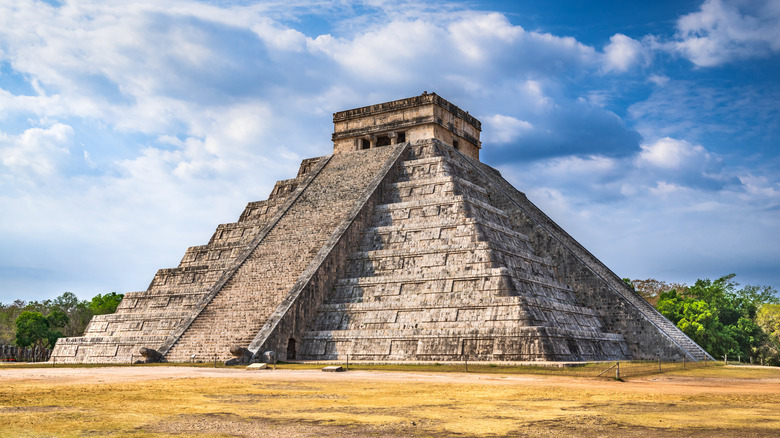Why The Mayans Painted Human Sacrifices Blue
Blue has historically been a difficult color to either naturally find dye for or to replicate artificially, only rivaled by purple dye, as thousands of Roman-era sea snails can attest (via Smithsonian Magazine). One of the few ancient cultures to truly create a blue pigment — not a rough approximation like violet — were the Ancient Egyptians, who used theirs in art and cosmetics. Medieval Europeans also produced blue paint from ground lapis, a stone whose rarity made blue an exceptionally expensive color in the continent's art (via BBC).
In Central America, the Mayans also broke this mold with their own blue dye. Where the previous examples were based on a variety of different minerals, the Mayans made their blue from indigo leaves and clay. According to New Scientist, the latter material preserved the dye for centuries in the constantly changing tropical weather. While Mayan blue has survived in its application as paint to this day, records exist of another less-permanent religious use.
To the Mayans, blue human sacrifices meant rainfall
Human sacrifice was a common institution in Mayan culture, albeit not always with the extremity of the Aztec Empire. The purpose of these ritual killings was to appease their pantheon of gods, who would ideally provide prosperity in exchange for their satiated blood-lust. Sacrifices would be brought to the alter of their respective community and have their lives ceremoniously ended with an obsidian blade. But to satisfy the rain god Chaak, the protocol was a bit different in detail.
Sacrifices to Chaak were painted blue, which the Mayans believed was a symbol of water's healing properties (via Reuters). Then, either with or without the otherwise standard heart removal, they were cast into the massive sinkhole known as the Ik Kil cenote alongside pieces of similarly painted pottery (via Live Science). As "only" 120 individuals have been distinguished from the remains found, it is unlikely this practice was routine — it was probably used more as a last resort.

